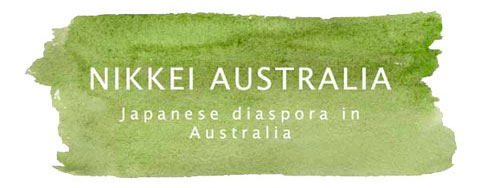Location 10: Cowra Japanese War Cemetery – 10.2 Who’s Buried Here
– Masu Kusano’s Story (Audio: 2 min 54 sec; 2.8MB)
Transcript:
Masu Kusano arrived in Darwin in 1901 and worked as a prostitute. She was just 19 years old. The first Japanese settlers in Australia were mostly men who were single. They worked in the pearl shell and sugarcane industries in northern Australia. Women were few and far between. Some were wives of merchants or diplomats, while others were prostitutes, like Masu. They were often called karayuki san, which means women who ventured overseas to work. Masu eventually settled on Thursday Island in far north Queensland. There was already a vibrant Japanese community there called Yokohama. And women continued to arrive on Thursday Island up until the 1920s. By 1897 there were 54 Japanese prostitutes working in brothels there. Most of the women spoke little English. In 1901, the White Australia policy was introduced, yet Yokohama continued to thrive. That’s because Japanese pearl shell divers were exempt from the policy. They were considered highly skilled and hard working. Officials on Thursday Island turned a blind eye to arrivals of young Japanese women.
Softly spoken, Masu was affectionately called Omasu san by her community in Yokohama. In her later years, Masu worked as a housekeeper in a boarding house for workers in the pearl shell industry. Masu remained single her whole life, as did most Japanese prostitutes, though a few women did marry, and had families. In 1941 the Pacific War broke out, and Masu was arrested as an ‘enemy alien’, as were all Japanese in Australia. She was later interned in Tatura internment camp in Victoria, where she lived out the rest of her days.
Masu was born in a small town called Shimabara in the southern island of Kyushu on August 16th, 1882. She died in a camp in Victoria on May 18th, 1943. Masu’s remains were moved from the Tatura campsite to Cowra in 1964. And here, Masu Kusano, Omasu san, rests.
Written by Dr Yuriko Nagata
Read by Mayu Kanamori
Producer/Sound Design: Masako Fukui
Music Credits: Clean Soul by Kevin MacLeod (freemusicarchive.org) CC by 3.0
Photo Credits: Photo 1: Masu Kusano’s grave plate in the Japanese War Cemetery; Photo by Mayu Kanamori
Photo 2: Masu Kusano’s Internee Wartime Service and Casualty record kept by Australian authorities during WWII; NAA: MP1103/1, QJF16234
Photo 3: Masu Kusano’s Internee Report kept by Australian authorities during WWII; NAA: MP1103/2, QJF16234
筆記録:
クサノ・マス(クサノ・マスキチ)は1901年にダーウィンに来て、売春婦として働いていた。まだ19歳だった。オーストラリアに定住した日本人のコミュニティー構成員は最初そのほとんどが独身の男性で、オーストラリア北部の真珠貝産業やサトウキビ畑で働いていた。日本人の女性の姿はほとんどなかった。かろうじて見かけるのは、商人や外交官の妻、そしてマスのような売春婦だけだった。
売春婦たちは「からゆきさん(唐行きさん)」と呼ばれることも多かった。からゆきさんとは、海外に出稼ぎに行った女性を指す。マスはクイーンズランド州の北の果て、木曜島に生活を落ち着けた。島にはすでに「ヨコハマ」という名の活気あふれる日本人コミュニティ―があり、木曜島には1920年代まで日本人女性たちがやって来ていた。1897年ごろには、木曜島の売春宿で日本人の売春婦54人が働いていた。彼女たちのほとんどは英語が話せなかった。
オーストラリアで1901年から白豪主義が導入されても「ヨコハマ」の活気が衰えることはなかった。日本人の真珠貝ダイバーは高度な技術を持つ勤勉な労働力とみなされ、白豪主義が適用されなかったからだ。木曜島の当局者は、若い日本人女性が島に入って来ても見て見ぬふりをしていた。
優しい口調で話すマスは周りから好かれ、ヨコハマのコニュニティーから親しみを込めて「おますさん」と呼ばれていた。マスは後年、真珠貝産業の労働者たちが暮らす下宿屋で家政婦として働いた。マスは生涯独身だった。日本人の売春婦のほとんどは独身を通したが、中には結婚し家庭を持った者もいた。
1941年に太平洋戦争が始まると、オーストラリアに住んでいたすべての日本人と同じく、マスは敵性外国人として逮捕された。その後、ビクトリア州タツラの収容所に送られ、マスはそこで余生を過ごした。
マスは1882年8月16日に九州の長崎県島原市に生まれ、1943年5月18日にビクトリア州の収容所で亡くなった。マスの遺体は1964年、タツラの収容所からカウラへと移された。そして今ここに、クサノ・マス、おますさんが眠っている。
英語原文 永田由利子 PhD
朗読 金森マユ
プロデューサー: 福井真佐子
音楽: ケビン・マクラウドの「クリーン・ソウル」(freemusicarchive.org) CC by 3.0
写真: 写真1: クサノ・マスの墓標。カウラ日本人戦争墓地にて(撮影:金森マユ)
写真2:クサノ・マスの「戦時中の抑留者の任務と死傷者の記録(Internee Wartime Service and Casualty record)」。第二次大戦中にオーストラリア当局が保管していた(NAA: MP1103/1, QJF16234)
写真3:クサノ・マスの「抑留者報告書(Internee Report」。第二次大戦中にオーストラリア当局が保管していた(NAA: MP1103/2, QJF16234)

The Cowra Voices Audio Archive Project 2023
Cowra Council is the copyright holder of all the audio works in the Cowra Voices Audio Archive. If you would like to reuse or copy any of the materials in this Archive, please contact Cowra Council. Australian copyright law is set out in the Copyright Act 1968 (Commonwealth).
